Dive into the curiosities of our vast oceans, captured in stunning detail by photographers.
Alex Dawson of Sweden swam away with the top honor at the 2024 Underwater Photographer of the Year competition for an eerie image titled “Whale Bones.” Photographers from around the world submitted 6,500 underwater photographs, but it was Dawson’s captivating image that won over the judges.
“Whale Bones was photographed in the toughest conditions,” noted Alex Mustard, chair of judging panel. “As a breath-hold diver descends below the Greenland ice sheet to bear witness to the carcasses. The composition invites us to consider our impact on the great creatures of this planet.”
Other notable images from this year’s contest include a shark showing off its toothy grin, a spectacular lionfish out for a swim, and a whale opening its mouth wide for a sardine snack.
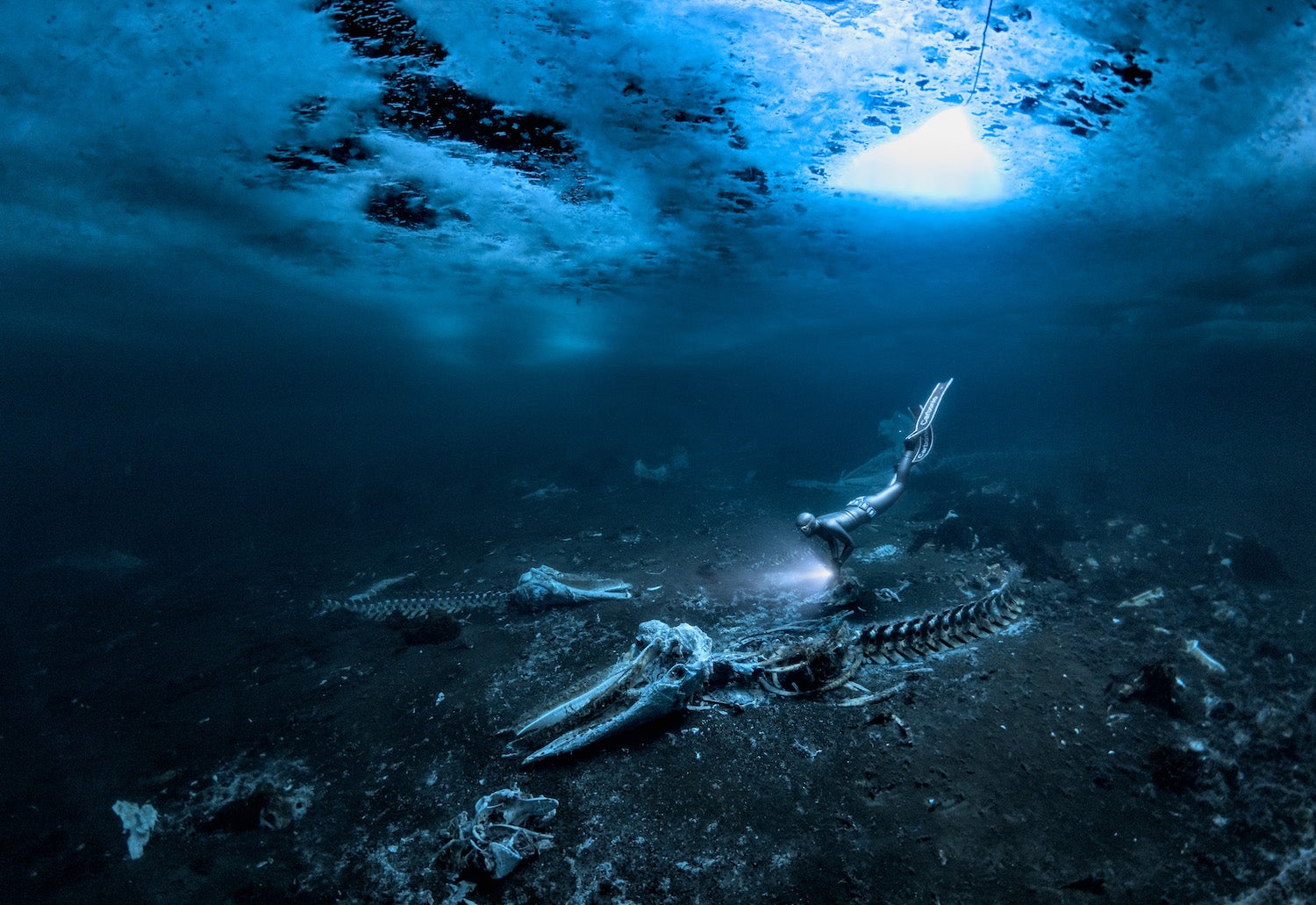
In eastern Greenland the local hunters bring their catch and share it among each other. From a stable population of over 100,000 minke whales in the North Atlantic the hunters of Tasiilaq typically take less than a dozen. The whale is pulled up on the beach during high tide and many families gather to cut the skin, blubber and the meat off at low tide. Almost all the whale is consumed, however the skeleton is pulled back into the sea by the next high tide and the remains can be found in shallow waters where various marine invertebrates and fish pick the bones clean. Photo: © Alex Dawson/UPY 2024
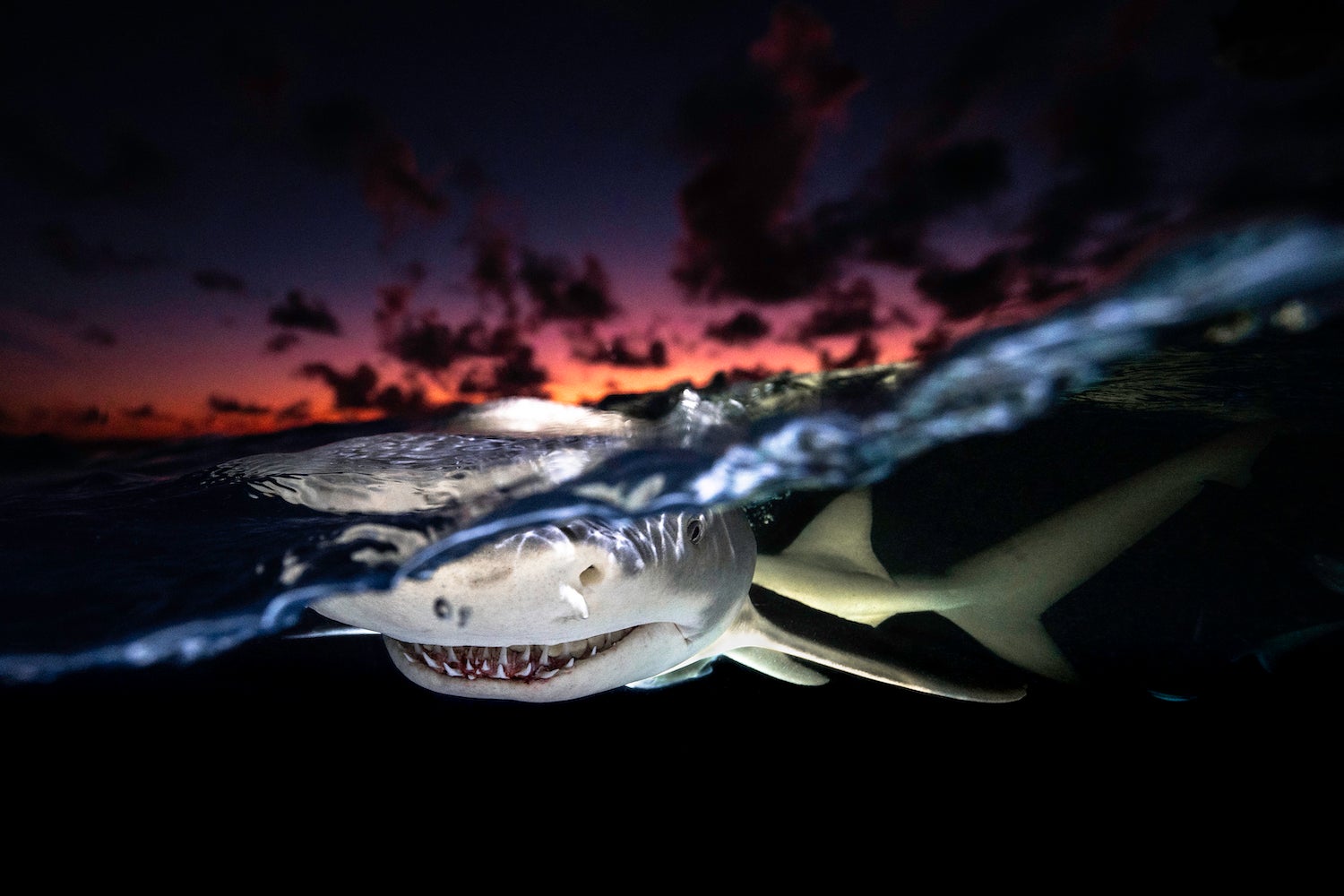
In 2011, the Bahamas declared its waters a “shark sanctuary”. Off the island of Grand Bahama, I witnessed several unforgettable encounters. At dusk, several dozen lemon sharks rise from the depths and surround the dive boat. Perched on the swim-step with my body half-submerged, I set out to take split shots. On this day the sea was rough, it was almost dark, and the sharks were lively and very curious, not hesitating to come into contact with my housing! In these light conditions, I replaced my strobes with 2 headlamps to ensure continuous light. I used the burst mode coupled with a fast shutter speed to better freeze the movement. With a lot of patience and luck, I was able to capture some very close-up shots, and highlight the magnificent colours of the sunset. A striking face-to-face encounter! Photo: ©Rodolphe Guignard/UPY 2024
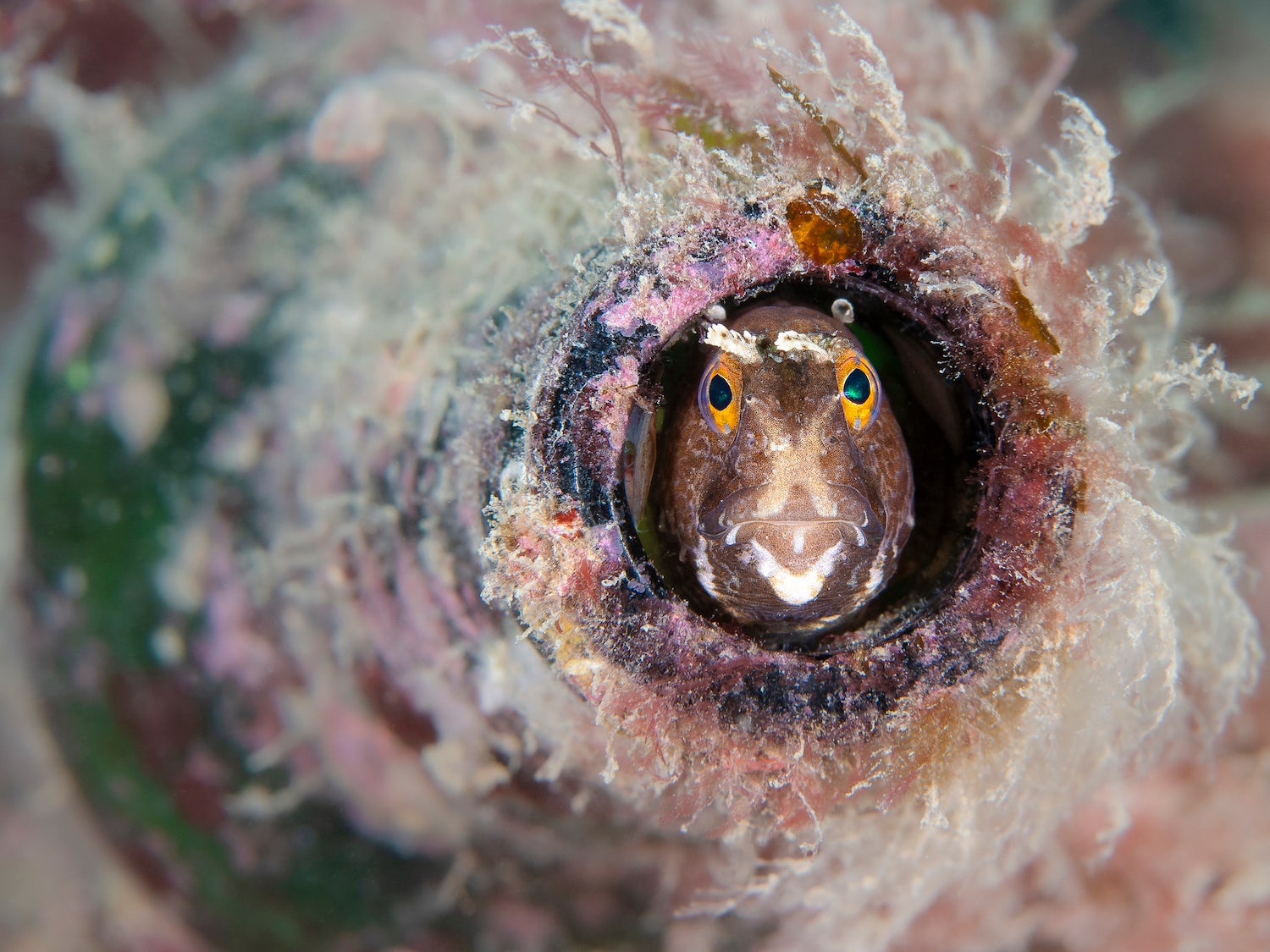
Butterfly blennies naturally choose abandoned whelk shells as their home but it seems they can get creative. On the seabed of the river Fal, amongst beautiful pink maerl, many have chosen to use discarded glass bottles as a shelter. Waste not want not. Photo: ©Kirsty Andrews/UPY 2024
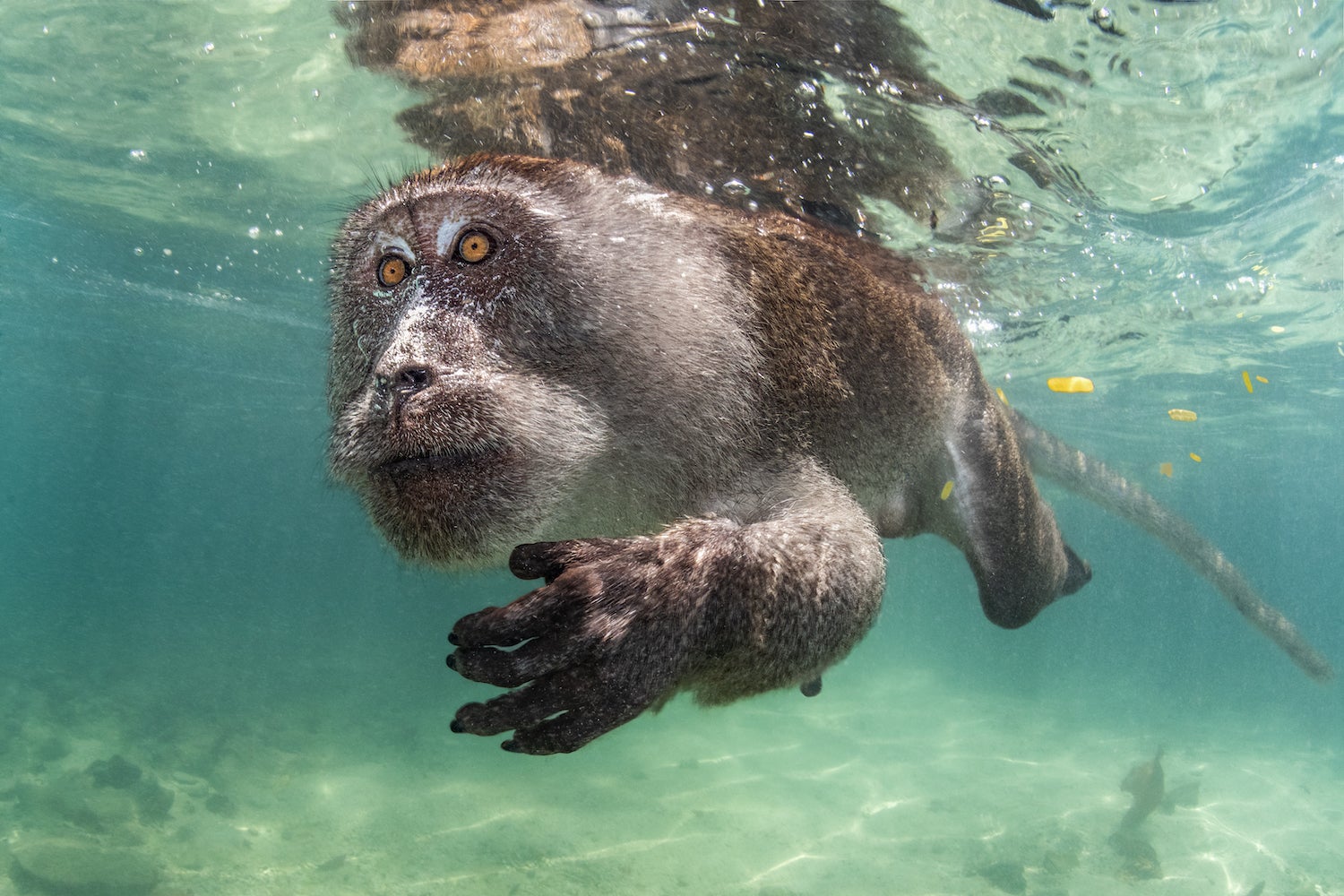
During fieldwork at Phi Phi Islands, Thailand, spanning several weeks, I focused my efforts on documenting the behaviour of the crab-eating macaques, in particularly their water forages. The macaques have adapted very well to living around the sea and will venture into the water for various reasons including transportation, scavenging, cooling down and playing. Highly efficient swimmers, they can dive for up to half a minute and can cover short distances faster than most humans. This photo offers a rare glimpse of the swimming movement of a male macaque. Photo: ©Suliman Alatiqi/UPY 2024
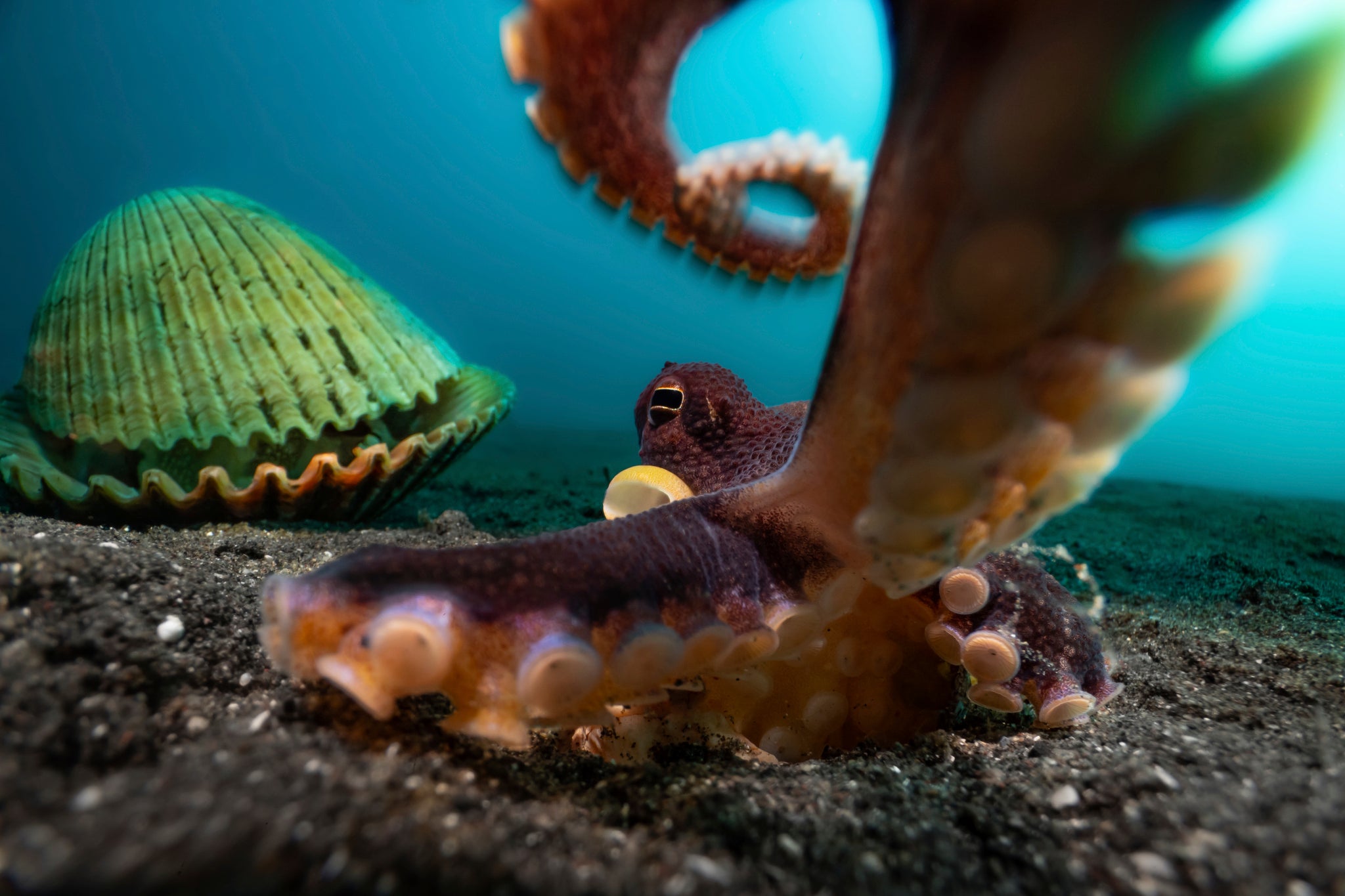
This shot was taken in Lembeh. The coconut octopus was sitting in a small hollow in the sand. In the background there is a shell where another coconut octopus was living. After I took some pictures, the octopus started to touch my lens. So, I was able to get this shoot with the important focus on the eye. Photo: ©Enrico Somogyi/UPY 2024
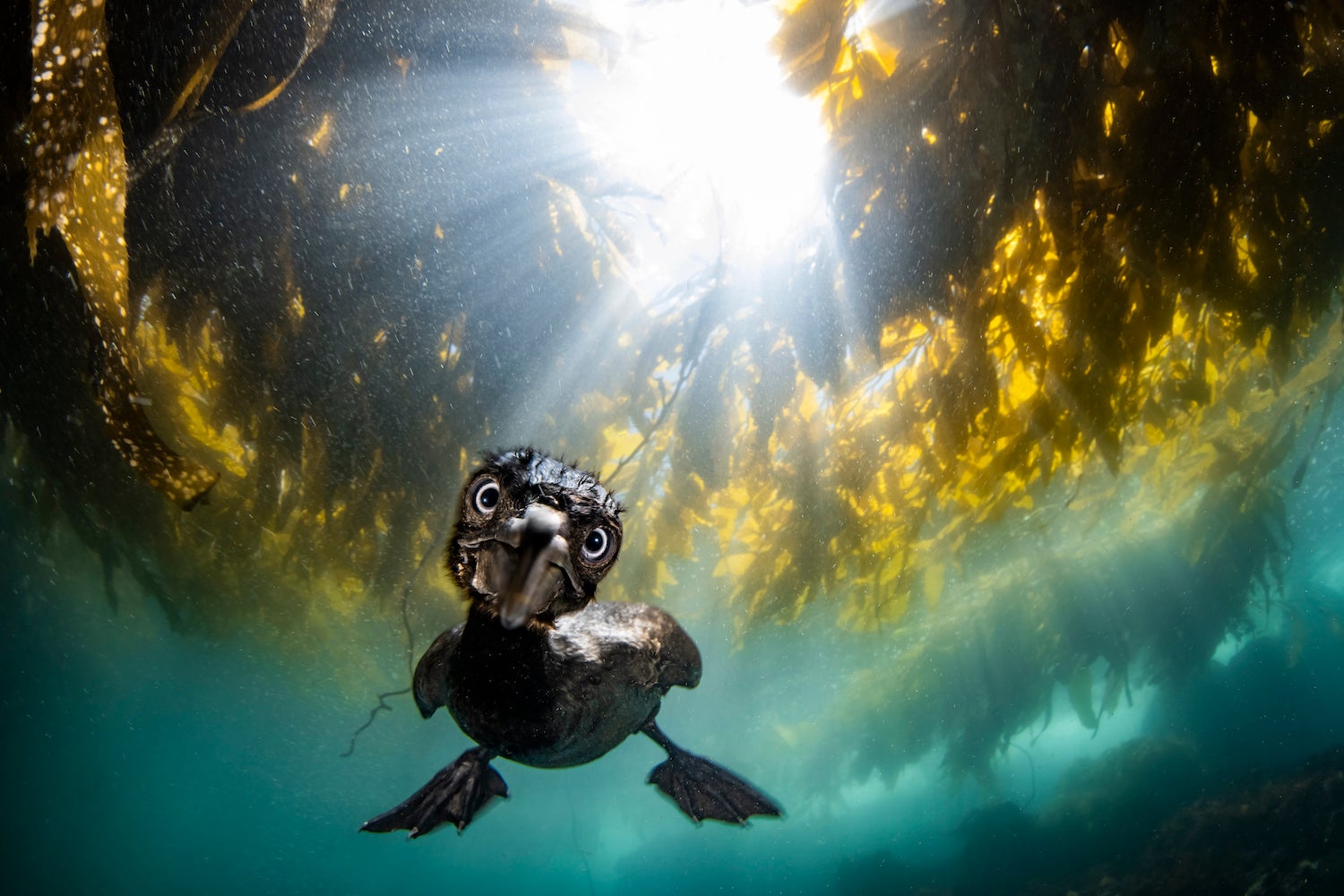
Even more surprising than encountering a bird underwater is having the bird try to attack your camera while hunting for small fish in the kelp forest! Last summer at a popular Monterey dive site, the cormorants seemed to be more active and curious than usual. Knowing this, I planned a dive on a sunny afternoon hoping to catch a cormorant beneath the kelp forest pierced by the afternoon sun. I had numerous cormorants approach me, peck at my head and tank, follow me around, and try to eat my camera. This one paused for a moment, perhaps after the seeing its self-reflection in my dome port, allowing me to capture a head on portrait. Countless species including these cormorants depend on healthy kelp forests to thrive. Unfortunately, local kelp forests have declined by over 80% in size in the last decade due to warmer waters and unchecked predation by urchins. Photo: ©Jon Anderson/UPY 2024
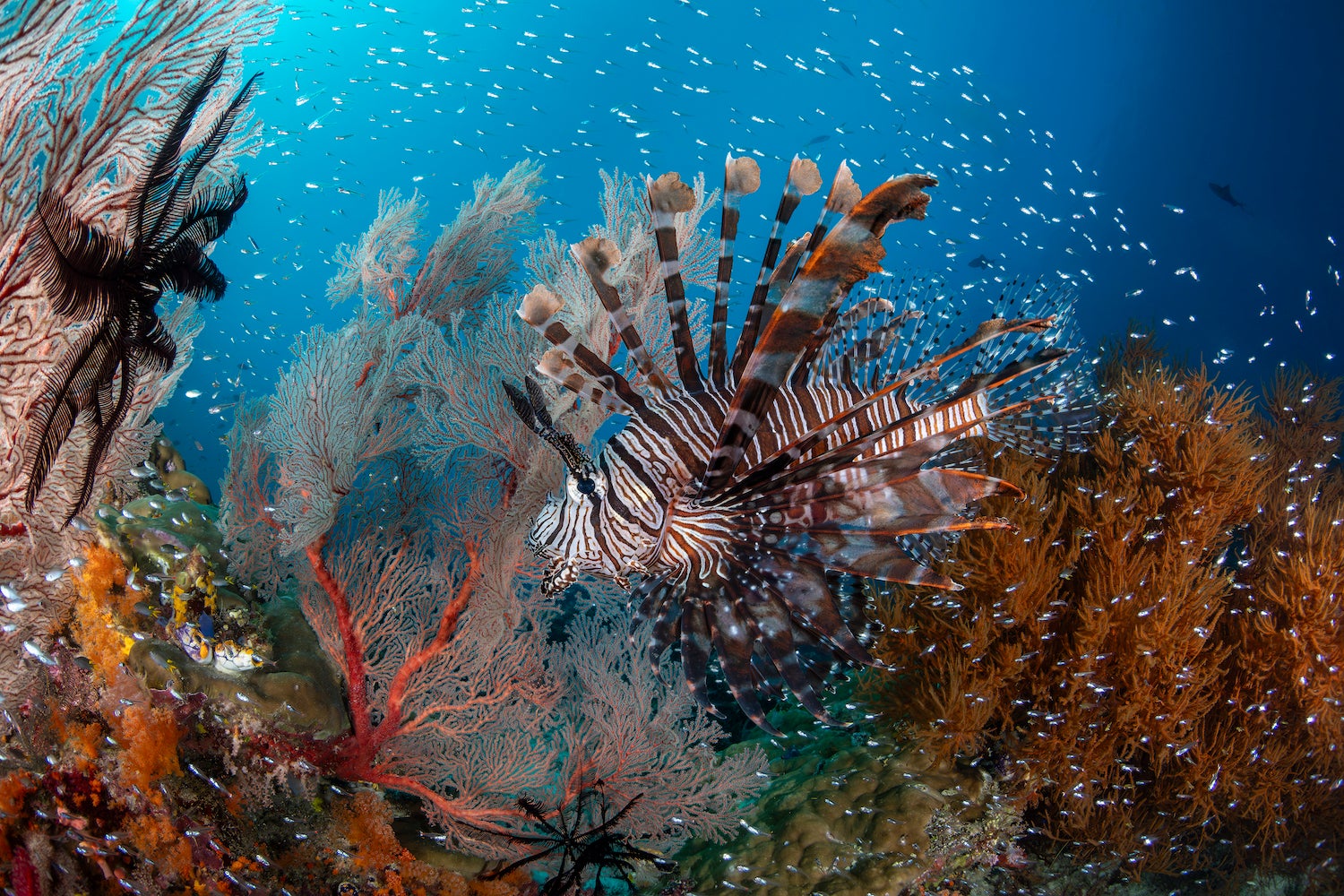
Raja Ampat, Indonesia is a destination that finds its way to the top of many divers’ bucket lists, and for good reason. The incredible diversity and density of marine life in this region can often verge on sensory overload as you swim and scan the reefscape trying to compose an image in the camera’s viewfinder. My goal on my first visit to this magical destination was to create a photograph that captured the explosion of life, colour and texture that comes to mind when thinking about the “Classic Raja Ampat” marine environment. This lionfish nestled up to a black crinoid feather star and framed by hundreds of tiny glass fish caught my attention and became a favourite image from the year of shooting. A fisheye lens and mini dome allowed me to approach within inches of the subject, filling the frame with the scene. Photo: ©Bryan H. Blauvelt/UPY 2024
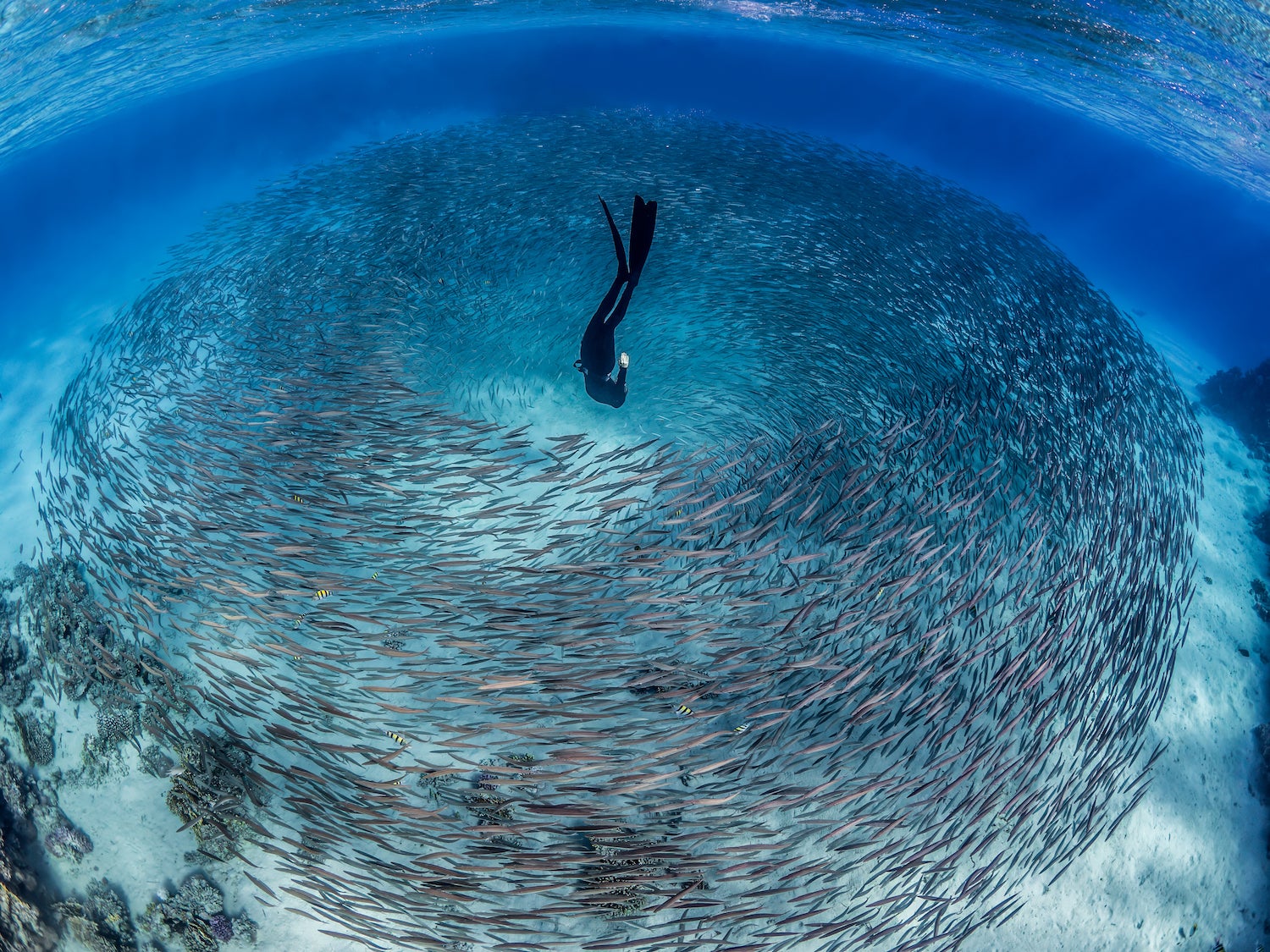
Summer 2023 brought the usual small groups of baby barracudas to each coral pinnacle on the house reef at Marsa Shagra, but for the first time in the 11 years I have lived there, they all gradually came together as one giant bait ball in the entrance of the bay, giving divers no choice but to pass through them at the start and end of their dive. Snorkelers spent hours every day floating above them, mesmerised by their movements.
One particularly clear and quiet morning, I was able to witness and photograph this free diver as she played amongst them, influencing their formation for as long as her breath would last. As autumn passed, the juveniles grew and the bait ball attracted hunters such as snappers, jacks and bigger barracudas who feasted for several months, and by winter it was if it had never existed. Photo: ©Sarah O’Gorman/UPY 2024
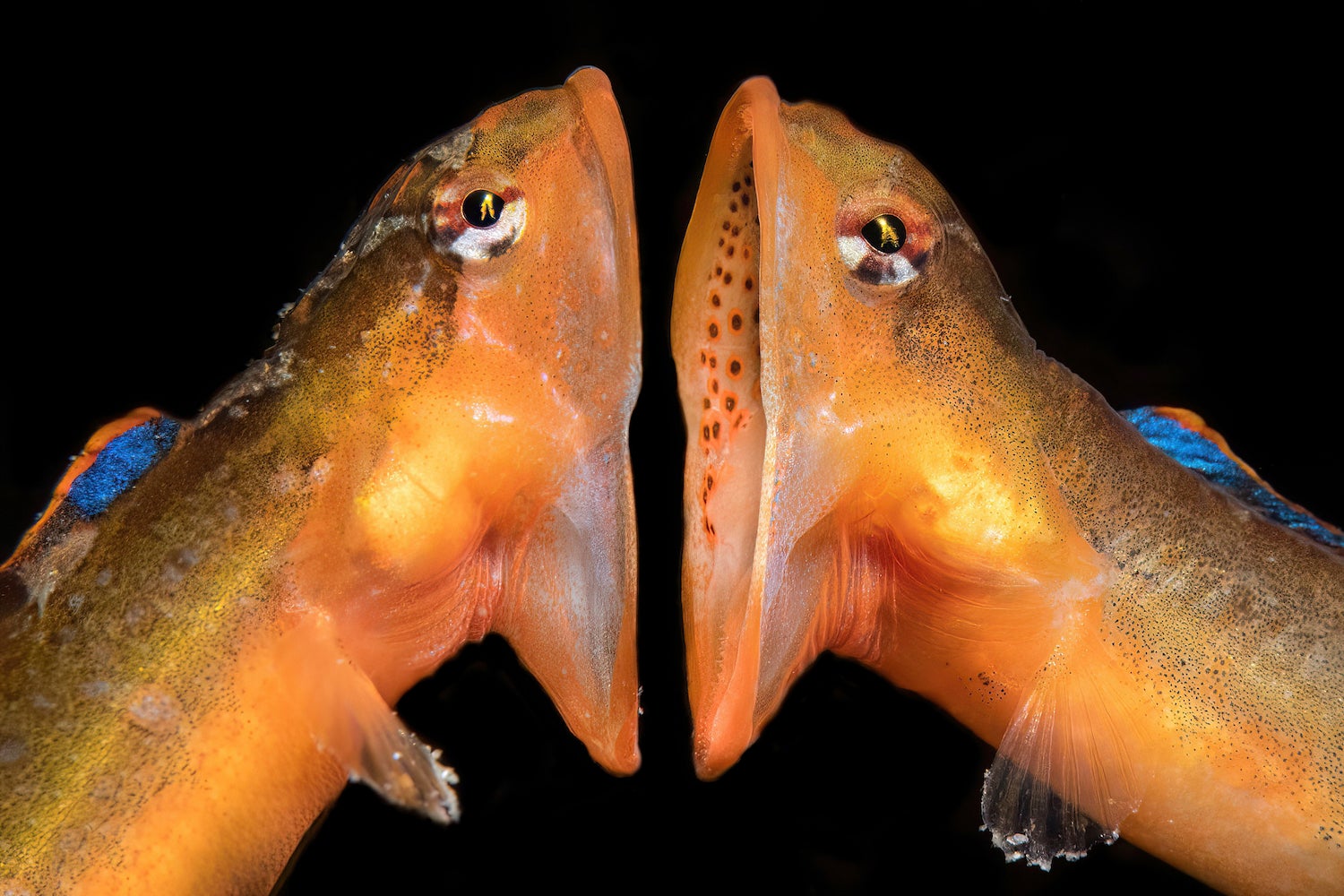
This is a photo of two female Zoarchias major eelpouts in a fight. During the breeding season, in order to fight for a suitable spawning nest, not only the males will fight each other, but also the females, and inexplicably, even the males and females will sometimes fight each other. Usually, they can only be found in very few places of southern Japan. I thought long and hard before shooting, how to perfectly present their two biggest characteristics in the shot: their unique spotted pattern inside the mouth and that the mouth that can open up to 180 degrees! My choice was to shoot the fight in its most intense moment, using a snooted strobe to create the black background. I’m very honoured to share this charming moment. Photo: ©JingGong Zhang/UPY 2024
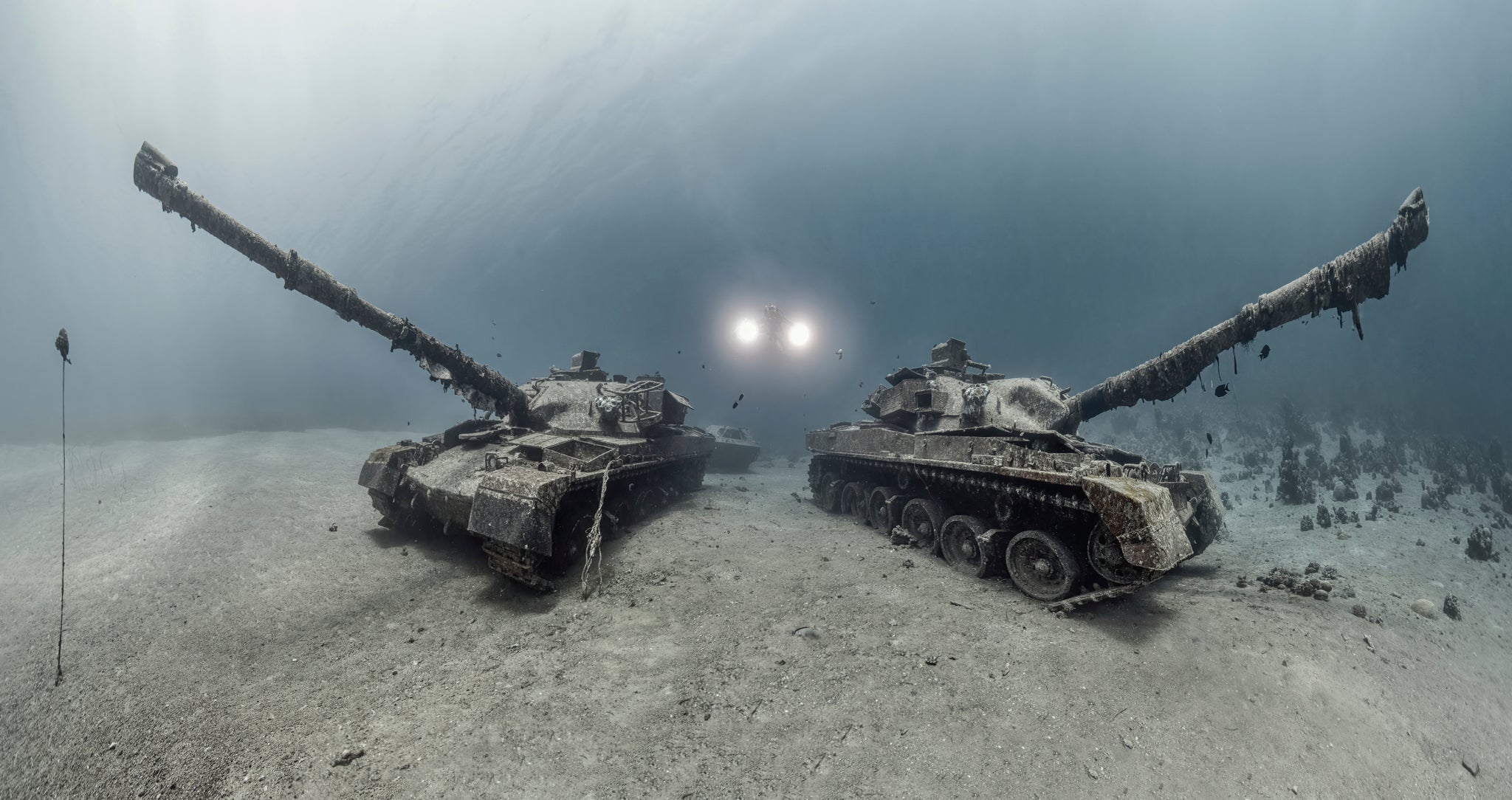
Together with an amazing group of photographers I had the honor to be invited to compete in the 1st Aqaba underwater photo competition in Jordan, where a highlight is the underwater military museum. An unusual sight of war machines sunk in 15 to 28 meters of water and stationed along the reefs in tactical battle formation.
I wanted to capture the symmetry of the Chieftain Tanks and strong presence of their 120mm guns, but the position where I could shoot that image with my fish-eye lens was occupied by a military ambulance. Therefore, I experimented with a 6 shot panorama from a point between the guns, which allowed me to recreate the virtual position further back, and achieve and elegant symmetry of the tanks, supported by the central focal point of my dive buddy in the back. Photo: ©Martin Broen/UPY 2024





